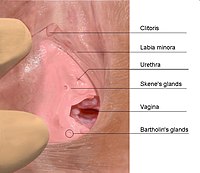
Photo from wikipedia
The psychopathological analysis of hysteria is a victim of narrow conceptualizations. Among these is the inscription of hysteria in the feminine sphere, about body and sexuality, which incentivized conceptual reductionism.… Click to show full abstract
The psychopathological analysis of hysteria is a victim of narrow conceptualizations. Among these is the inscription of hysteria in the feminine sphere, about body and sexuality, which incentivized conceptual reductionism. Hysteria has been mainly considered a gendered pathology, almost exclusively female, and it has been associated with cultural and/or religious features over time rather than treated as a psychopathological world. Further, hysteria has been dominated by conceptual inaccuracies and indecision, not only in terms of clinical features but also in terms of its definition. For this reason, it seems necessary to “undress” hysteria from this feminization, sexualization, and corporealization with which it has been abundantly clothed over the years. “Undressing” hysteria will make possible a reconfiguring and deconstructing of the explanatory-causal model of Charcot and Freud. However, if we take out this cultural heritage, the stigma accompanying this diagnosis, and the weight of the enormous historical tradition that hysteria carries, the world of hysteria continues to constitute a domain full of complexity and nosographic challenges. Hysteria has been considered a sum of psychological behaviors and states illustrated by drama, mystery, or falsity. The difficulty in understanding the multiple somatic manifestations which characterize this clinical condition created several controversies and much confusion. In the current nosography, the personological component of hysteria has been separated from its symptomatic manifestation, in the Histrionic Personality Disorder and Conversion Disorder categories, respectively. This segmentation by descriptive nosography does contribute to a unitary understanding of the phenomenon and, consequently, of daily clinical practice. Clinical complexity can be grasped and deciphered only if the symptom is inscribed in the patient’s lifeworld and his/her subjective life history. Clinical practice is thus thought of in terms of a structural aggregation of a homogeneous set of phenomena, together constituting a specific way of being in the world. The starting point of this article is the evident modalities characterizing this life-world, taking care not to confuse the point of origin with the point of expression.
Journal Title: Frontiers in Psychology
Year Published: 2022
Link to full text (if available)
Share on Social Media: Sign Up to like & get
recommendations!